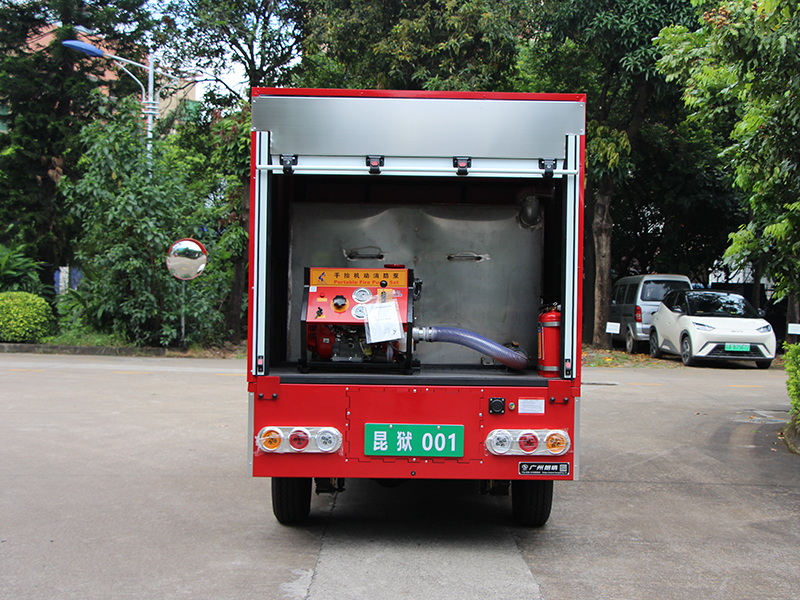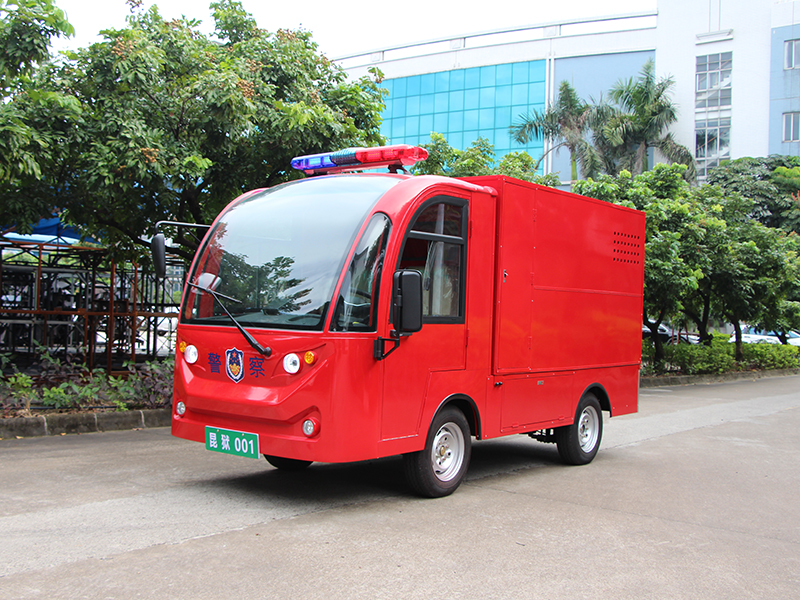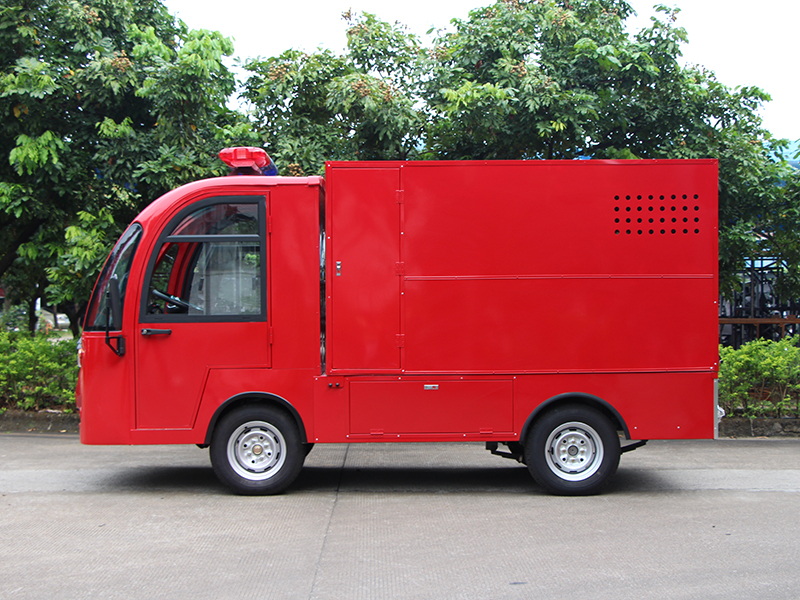Content Menu
● What Are Electric Ambulance Carts?
● Leading Electric Ambulance Cart Manufacturers in Japan
>> Nissan Motor Corporation
>> Toyota Motor Corporation
>> Specialized OEM Manufacturers
● Key Features of Electric Ambulance Carts in Japan
● OEM Services for International Clients
● Environmental and Operational Advantages
● Future Trends in Electric Ambulance Carts
● Conclusion
● Frequently Asked Questions (FAQs)
>> 1. What is the difference between electric ambulance carts and traditional ambulances?
>> 2. Which companies are the top electric ambulance cart manufacturers in Japan?
>> 3. How do electric ambulance carts improve hospital emergency response?
>> 4. Are Japanese electric ambulance carts suitable for export markets?
>> 5. What environmental benefits do electric ambulance carts offer?
Electric ambulance carts are transforming emergency medical transport in Japan, combining green technology with enhanced medical functionality. These carts serve as specialized electric vehicles designed for rapid patient transport within hospitals, healthcare campuses, and urban settings where traditional ambulances might be constrained. As Japan advances towards sustainable healthcare solutions, electric ambulance carts made by leading electric ambulance cart manufacturers and suppliers exemplify innovation, quality, and environmental responsibility.

What Are Electric Ambulance Carts?
Electric ambulance carts are compact, electrically powered vehicles built primarily for short-distance patient transport. Often modified from electric golf carts, these carts incorporate medical-grade features such as integrated stretchers, storage for life-support equipment, and suspension systems designed for patient comfort. Their electric drivetrains allow silent operation and zero emissions, making them ideal for indoor or congested environments where noise and pollution must be minimized.
Unlike full-sized ambulances, electric ambulance carts focus on reliability, agility, and environmental friendliness without sacrificing essential medical functions. They efficiently navigate hospital corridors, sports venues, industrial complexes, and community centers to provide timely emergency transport with a reduced carbon footprint.
Leading Electric Ambulance Cart Manufacturers in Japan
Nissan Motor Corporation
Nissan is among the forefront drivers in Japan's electric ambulance sector. The company has introduced the Nissan NV400 Zero Emission EV Ambulance, which operates as part of Tokyo's zero-emission emergency vehicle fleet. Utilizing a 33 kWh lithium-ion battery supplemented by an 8 kWh auxiliary battery, the vehicle supports extended medical equipment use and enhances patient comfort through reduced vibration and noise. In collaboration with specialized body builders such as Autoworks Kyoto and Gruau, Nissan customizes ambulance builds tailored to Japan's rigorous medical and safety regulations. These vehicles incorporate complete emergency medical functionalities in a compact, electric package optimized for urban environments.
Toyota Motor Corporation
Globally recognized for durable, innovative vehicles, Toyota has leveraged its expertise to manufacture electric ambulance carts designed on trusted platforms such as the Toyota Hiace and Land Cruiser. Toyota prioritizes safety, reliability, and comfort in their ambulance models, integrating state-of-the-art electric drivetrains with rugged chassis systems suitable for diverse terrains. Their product lineup includes custom configurations to accommodate medical apparatus and accommodate local EMT preferences. Toyota's OEM flexibility permits delivery of tailor-made solutions for healthcare providers and municipal emergency fleets.
Specialized OEM Manufacturers
Beyond major automotive houses, OEM manufacturers specializing in electric ambulance carts are thriving. Companies like Guangzhou Langqing Electric Car Co., Ltd. focus on producing highly customizable carts suited for hospital campuses, sports arenas, airports, and small communities. These manufacturers offer carts with 2 to 6 passenger options and configurations that include professional medical stretchers or ambulance beds, integrated life-support equipment mounts, and advanced safety features. Such electric carts combine the mobility of golf carts with professional medical functionalities, supporting critical patient transport needs efficiently and sustainably.
Additional notable manufacturers in the Japanese and regional markets include Eagle EV, KARTSANA, and Guangdong Yatian Industrial Co., Ltd., each advancing electric ambulance cart technology focusing on quiet operation, equipment integration, and patient-centric design.
Key Features of Electric Ambulance Carts in Japan
Electric ambulance carts produced and supplied by Japanese companies or OEM partners feature multiple innovations that enhance their usability for modern emergency medical systems:
- Quiet and Smooth Operation: Electric motors drastically reduce noise and vibration, providing calming transport for patients and reducing stress for medical personnel.
- Zero Emissions: These carts generate no exhaust, supporting Japan's commitment to sustainable and environmentally responsible healthcare solutions.
- Extended Battery Life & Efficient Charging: Lithium-ion battery systems provide ranges up to 100 kilometers on a single charge and benefit from fast charging or battery swap capabilities to maximize operational uptime.
- Medical Equipment Integration: Secure mounting points and storage compartments enable essentials like oxygen tanks, AEDs, vital signs monitors, and emergency toolkits to be readily accessible.
- Customizable Interior Configurations: Depending on usage scenarios, interiors can be configured with different stretcher sizes, additional seating, or medical instrumentation, tailored to needs.
- Enhanced Safety Features: Advanced brakes, emergency lighting, and audible warnings ensure safe operation in crowded hospital corridors and urban settings.
- Compact and Agile: Designed to fit through narrow passages and congested areas, they outperform traditional ambulances in tight spaces.
- Durable Build: Use of lightweight yet sturdy aluminum alloy chassis and corrosion-resistant materials ensures longevity and easy maintenance.

OEM Services for International Clients
Japanese manufacturers and their OEM partners often extend customized services to international healthcare providers, brands, and distributors. These OEM services include:
- Vehicle design tailored to client medical requirements and local regulations.
- Integration of proprietary medical devices and equipment for seamless operation.
- Adaptation to regional driving standards with options for right-hand or left-hand drive.
- Compliance assistance for international certifications and safety norms.
- After-sales support including maintenance, parts, and battery replacement services.
- Staff training on vehicle operation, safety protocols, and equipment handling.
Such OEM collaborations facilitate brands globally to leverage Japanese engineering excellence and medical innovation in their fleets.
Environmental and Operational Advantages
Electric ambulance carts provide clear benefits to healthcare operations and urban sustainability:
- Sustainability: Their zero-emission operation aligns with Japan's national carbon neutrality goals and reduces hospital-related air pollution.
- Cost-Effective: Lower fuel requirements and reduced mechanical complexity translate to decreased operational and maintenance expenses.
- Improved Patient Care: Reduced noise and vibration levels create more comfortable conditions during patient transport.
- Enhanced Hospital Efficiency: Agile movement within hospital premises allows faster response times, reducing patient wait and transfer durations.
- Community Health Impact: In urban areas, these carts contribute to noise reduction and cleaner air, enhancing overall public health.
- Adapted for Diverse Environments: Whether navigating hospital corridors, event venues, or outdoor pathways, these carts offer versatile medical transport capabilities.
Future Trends in Electric Ambulance Carts
The next wave of innovation in electric ambulance carts is driven by digital integration and autonomous technology:
- AI-Enabled Patient Monitoring: Real-time vital signs and diagnostic data transmissions to medical personnel can improve emergency care.
- Autonomous Navigation: Self-driving carts could reduce staff workload, allowing automated patient transfers within hospital or campus facilities.
- Battery Advancements: Solid-state batteries promise longer ranges and faster charging, further increasing operational readiness.
- Enhanced Safety Systems: Incorporation of collision avoidance sensors and adaptive lighting to improve safety in crowded or hazardous environments.
- Modular Medical Equipment: Interchangeable modules that adapt ambulance carts quickly for different emergency requirements.
These developments position electric ambulance carts as critical tools in futuristic healthcare and emergency systems.
Conclusion
Japan's electric ambulance cart manufacturers and suppliers stand at the forefront of integrating cutting-edge electric vehicle technology with critical medical functionality. Companies like Nissan and Toyota, alongside specialized OEMs such as Langqing, provide tailored, eco-friendly patient transport solutions that boost healthcare efficiency while supporting environmental goals. Equipped with advanced medical integrations, safety features, and customizable configurations, these carts are essential assets for hospitals and emergency responders navigating dense, confined, or indoor environments. With ongoing innovation in AI, autonomy, and energy storage, Japan's industry leads a global shift toward sustainable, patient-centric emergency transport systems.

Frequently Asked Questions (FAQs)
1. What is the difference between electric ambulance carts and traditional ambulances?
Electric ambulance carts are smaller, electric-powered vehicles designed primarily for short-distance patient transport within hospitals and confined environments. They focus on quiet operation, zero emissions, and maneuverability, unlike traditional fuel-powered ambulances designed for long-distance road transport.
2. Which companies are the top electric ambulance cart manufacturers in Japan?
The leading manufacturers include Nissan Motor Corporation, Toyota Motor Corporation, and OEM specialists like Guangzhou Langqing Electric Car Co., Ltd. Other notable players in the market include Eagle EV and KARTSANA.
3. How do electric ambulance carts improve hospital emergency response?
They enable rapid, quiet patient transfers within hospital premises or large facilities, reducing wait and transfer times. Their compact design allows maneuvering through tight spaces not accessible by regular ambulances, enhancing operational efficiency.
4. Are Japanese electric ambulance carts suitable for export markets?
Yes, many Japanese manufacturers provide OEM customization, including adaptations for different driving standards, regulatory compliance, and medical equipment integration, facilitating international distribution.
5. What environmental benefits do electric ambulance carts offer?
They produce zero emissions and reduce noise pollution compared to traditional fuel-based ambulances, supporting urban air quality improvement and aligning with sustainability initiatives.










































